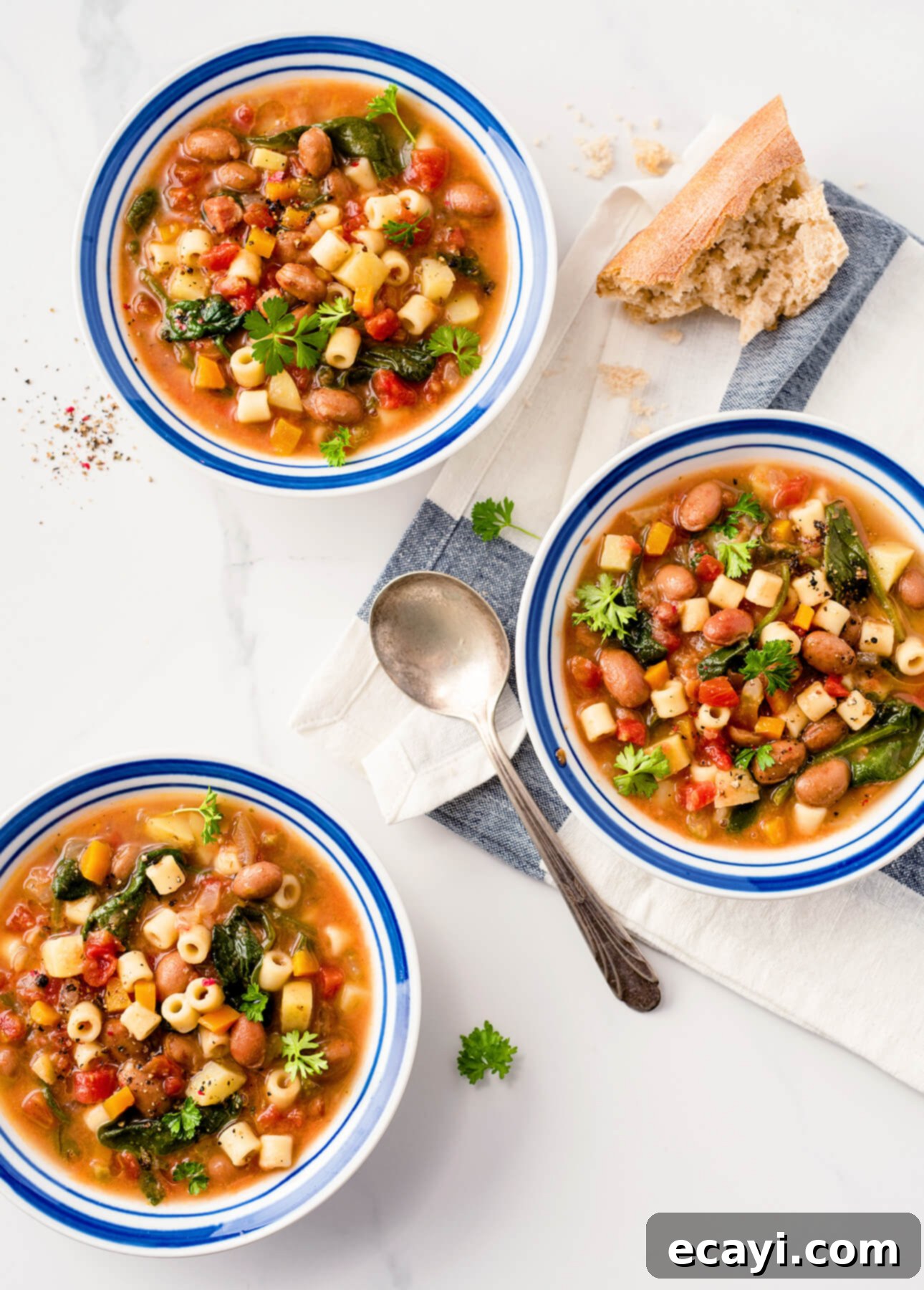Hearty Winter Minestrone: Your Ultimate Comfort Soup for Chilly Days
When the temperatures drop and the days grow shorter, there’s nothing quite as comforting and satisfying as a warm bowl of soup. This hearty winter minestrone isn’t just any soup; it’s a vibrant, vegetable-packed, and nutrient-dense meal in itself, designed to nourish your body and soul through the cooler seasons. Brimming with an array of garden-fresh vegetables, wholesome greens, and protein-rich beans, this minestrone promises to be your go-to recipe for staying cozy and well-fed.
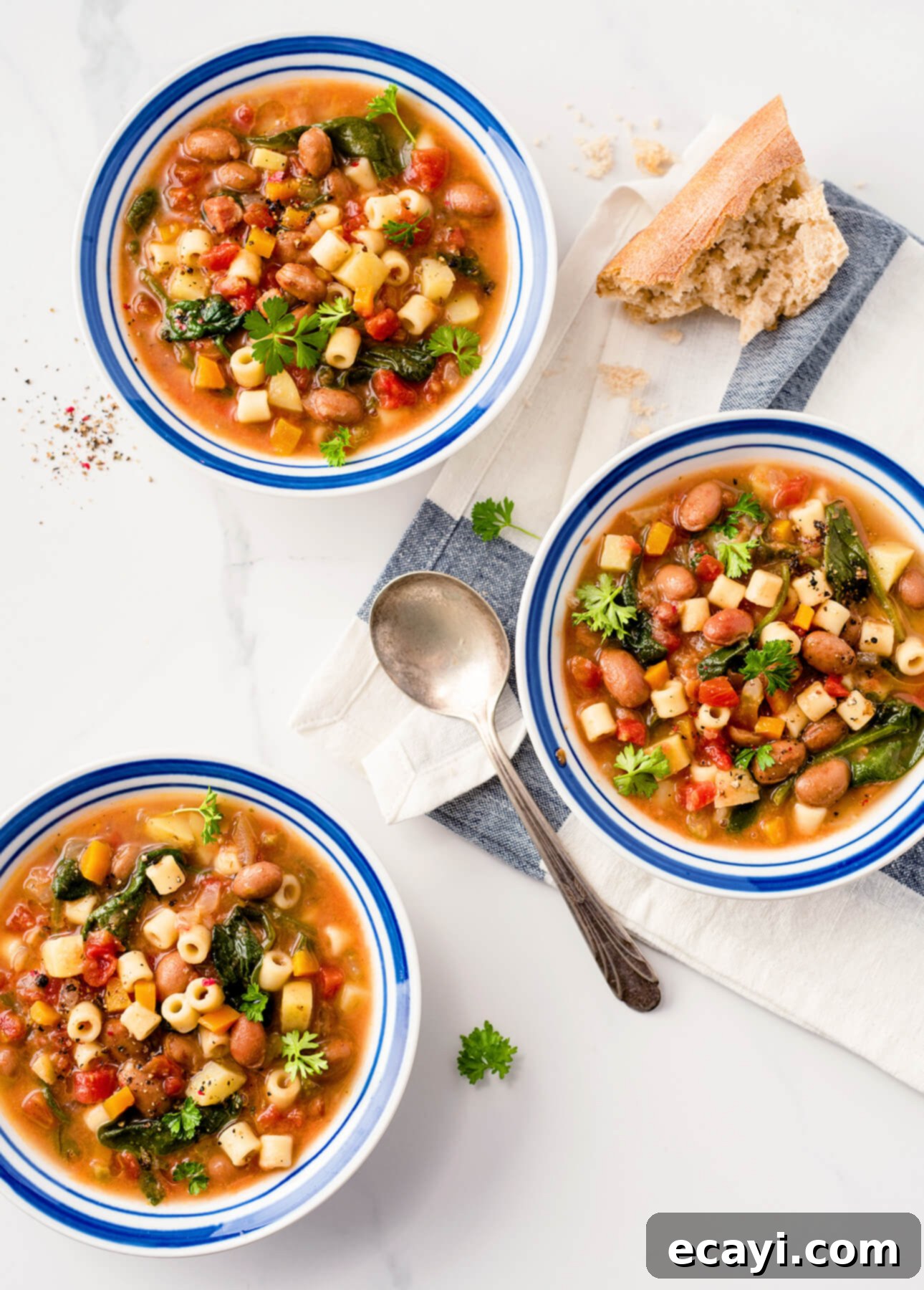
This post contains affiliate links. Full disclosure is at the bottom of the article.
Embracing Winter with a Bowl of Warmth
Living in a city where winters are characterized by their considerable length, abundant snowfall, and biting cold, I’ve come to appreciate the profound comfort a truly good soup can offer. While I’ve perfected the art of layering my clothing, even when spending an entire day indoors, and rely heavily on my trusty heated footrest to keep me warm at my desk, there are moments when the cold penetrates right to my bones. During these times, only two things truly provide solace: an endless supply of hot coffee and, more importantly, steaming, flavorful bowls of soup.
My love for soup knows no bounds. From the speedy and satisfying lentil and tomato soup, to the rich and cheesy classic French onion soup, and the utterly delightful bowls of ramen, each holds a special place in my heart. However, one soup stands out with particular fondness from my childhood: minestrone. My mother, an incredible cook, frequently prepared her version of minestrone, packed with an abundance of fresh vegetables, hearty beans, and tender pasta. It was always incredibly nourishing and filling. While as a child I might have occasionally picked around the beans, my appreciation for minestrone grew with me, transforming it into one of my most cherished wintertime comfort foods.
Understanding Minestrone: More Than Just a Soup
It’s fascinating to realize that minestrone isn’t a rigid, singular recipe, but rather a flexible culinary tradition. The word “minestrone” itself is derived from the Italian term minestra, which simply means “soup.” In Italy, the language distinguishes between various types of soup: zuppa might refer to a lighter, simpler soup like a tomato broth, whereas minestrone designates a much more substantial and hearty variety. True minestrone is always thick, almost stew-like, and generously loaded with vegetables, often incorporating rice or pasta to make it even more filling.
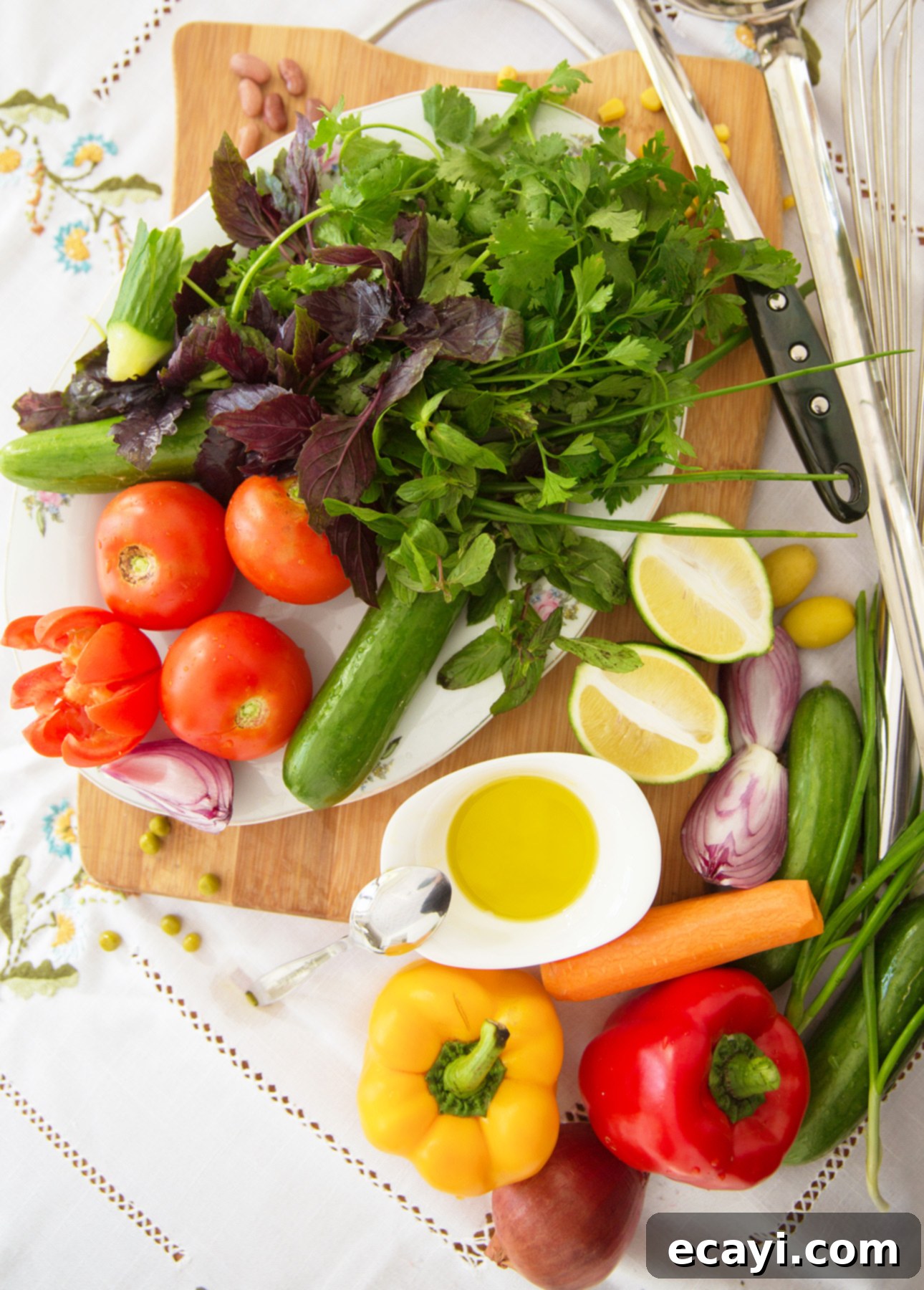
The beauty of minestrone lies in its humble origins and inherent adaptability. It was traditionally born out of necessity, a resourceful dish made from whatever seasonal vegetables were readily available, augmented with beans for extra protein and nutrition. This means that virtually any robust vegetable soup could be considered a minestrone, allowing for endless variations based on the season and local produce. Imagine a vibrant spring minestrone featuring fresh peas, tender leeks, and aromatic fennel. A summer version might highlight crisp green beans, tender zucchini, and juicy fresh tomatoes, perhaps served with a dollop of homemade pesto for a bright finish. Come autumn, squash would undoubtedly take center stage in a rich and earthy minestrone.
The Ultimate Winter Minestrone: A Deep Dive into Warmth and Flavor
Among all its seasonal incarnations, winter minestrone truly stands out as the heartiest and most comforting variety. It’s crafted with vegetables that traditionally store well through the colder months, such as robust onions, sweet carrots, and starchy potatoes, ensuring a satisfying depth of flavor and texture. This particular recipe takes inspiration from my mom’s cherished minestrone, elevating it with a few clever additions that boost its savory profile, namely rich pancetta and the umami-packed parmesan rind. These ingredients transform it into a truly indulgent and warming meal in a bowl, perfect for fending off winter chills.
Speaking of parmesan rind, here’s a crucial tip for any cheese lover: never, ever discard the rinds from wedges of Parmigiano-Reggiano! These seemingly insignificant edges are flavor powerhouses. Once you’ve grated or consumed all the delicious cheese, simply collect the rinds and store them in a resealable plastic bag or an airtight container in your freezer. A single piece of parmesan rind can infuse your minestrone, or any soup or stew, with an incredible depth of savory, nutty flavor, transforming even a store-bought beef, chicken, or vegetable broth into something truly gourmet. It’s a simple, zero-waste trick that yields immense culinary rewards.
The combination of diced pancetta, slowly rendered to a golden crisp, creates a flavorful foundation, releasing savory notes that permeate the entire soup. This initial step builds a complex base that complements the medley of vegetables. Adding robust root vegetables like carrots, celery, and potatoes ensures a satisfying bite, while the inclusion of hearty greens like kale, Swiss chard, or spinach introduces a lovely balance of freshness and texture, along with a significant nutritional boost. The beans provide essential protein and fiber, making each spoonful truly fulfilling. This winter minestrone is designed not just to warm you from the inside out, but to provide sustained energy and well-being during the chilliest days.
Helpful Tips for Making the Best Winter Minestrone
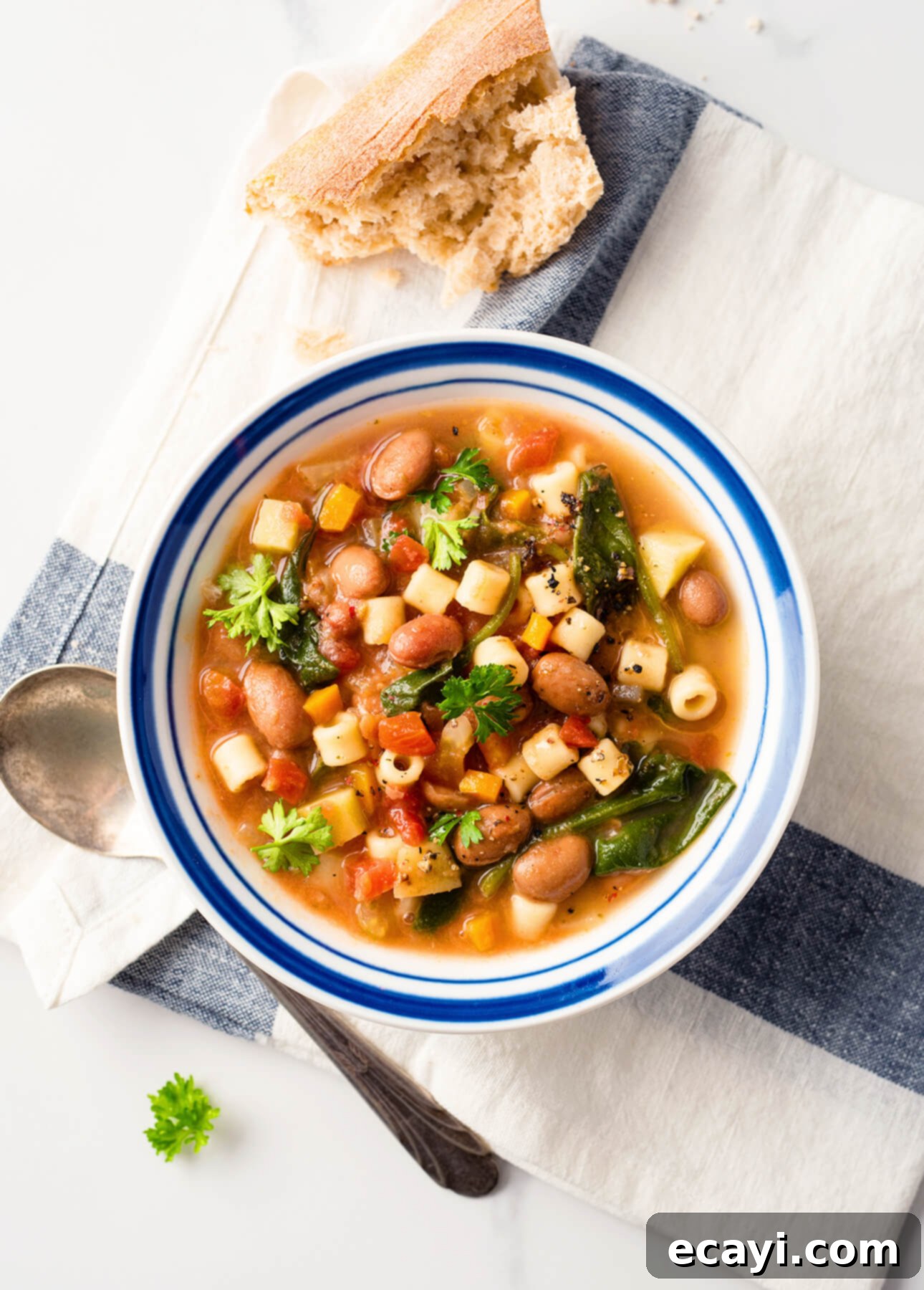
Can I freeze winter minestrone for later?
Absolutely! Winter minestrone is not only an excellent candidate for making ahead but actually benefits from an overnight rest, allowing its robust flavors to fully meld and deepen. This makes it an ideal meal prep option. Consider making a double batch: you can then easily freeze individual portions in airtight containers or freezer-safe bags. Properly stored, frozen minestrone will keep beautifully for icy weeks or even months, providing a convenient and delicious meal whenever you need a quick, warming fix. To reheat, simply thaw overnight in the refrigerator and gently warm on the stovetop, adding a splash of broth or water if needed to adjust consistency.
What other types of vegetables can I add to my winter minestrone?
This is where the true spirit of minestrone shines through! Embrace the Italian philosophy and use whatever fresh or frozen vegetables you have on hand. Beyond the core ingredients, consider adding a variety of delicious options. Frozen green peas or green beans can add a touch of sweetness and vibrant color. Cubes of butternut squash or sweet potato would lend a creamy texture and earthy flavor. Even broccoli or cauliflower florets can be wonderful additions, bringing their unique crunch and nutritional benefits. Don’t be afraid to experiment with different combinations; for example, adding mushrooms for umami or bell peppers for a touch of sweetness and color. Feel free to explore and discover your favorite blend!
Can I use dried beans instead of canned beans in winter minestrone?
Of course, you can! Using dried beans can offer a richer flavor and superior texture compared to canned varieties, though it does require a bit of foresight. To prepare dried beans for your minestrone, simply soak 1/2 cup (125 ml) of your preferred dried beans (such as Roman/borlotti, red kidney, or cannellini) overnight in plenty of cold water. The next day, drain and rinse the soaked beans, then transfer them to a saucepan and cover with fresh water. Bring to a boil, then reduce the heat and simmer until they are tender. Cooking times will vary depending on the type of bean, typically ranging from 45 minutes to 2 hours. Once tender, drain them and add them to your winter minestrone at the point where the recipe calls for canned beans. This extra step is well worth the effort for the depth it adds to your homemade soup!
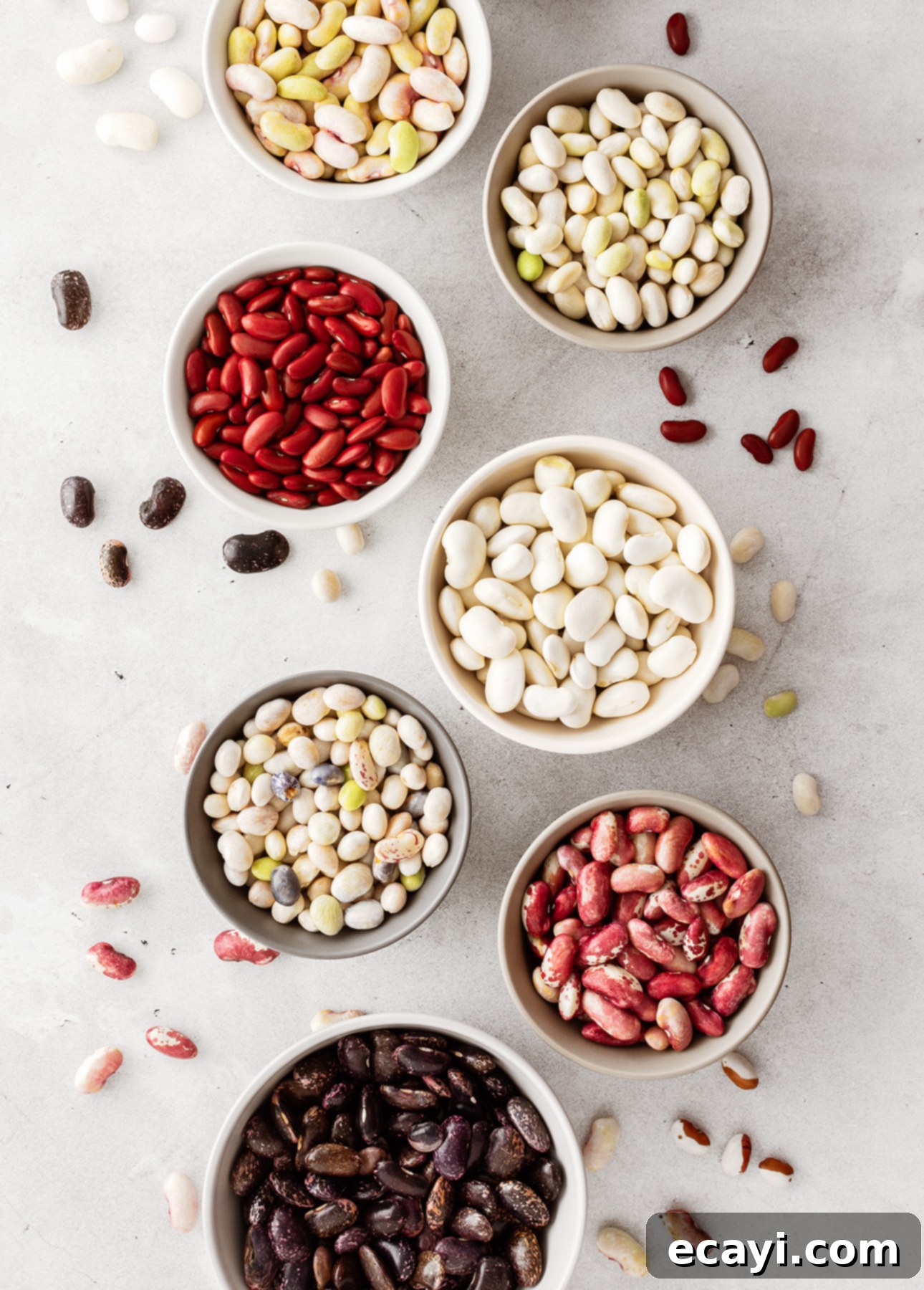
How can I make a vegan winter minestrone?
Making this minestrone vegan is wonderfully straightforward! The primary adjustments involve simply omitting the pancetta and the Parmigiano-Reggiano rind from the recipe. Crucially, ensure you use a high-quality vegetable broth as your liquid base, checking labels to confirm it’s truly vegan. For an extra layer of savory, cheesy flavor without any dairy, sprinkle individual servings of your vegan winter minestrone with nutritional yeast. This ingredient provides a delightful umami boost that mimics the richness of cheese, making your vegan soup just as satisfying and flavorful.
Additional Dietary Considerations: Gluten-Free and Dairy-Free Options
Beyond vegan variations, this minestrone recipe is incredibly adaptable for other dietary needs. To make a gluten-free winter minestrone, simply substitute regular pasta with a good quality gluten-free short dry pasta. Many excellent options are available today that hold up well in soup, preventing them from becoming mushy. Brands like Barilla or Jovial offer great gluten-free ditalini or other small pasta shapes. For a completely dairy-free minestrone (which is often related to the vegan option but might still include meat, if desired), you would also omit the Parmesan rind and any grated Parmesan topping. As with the vegan version, nutritional yeast is a fantastic way to add back a cheesy, savory depth if you’re looking for that umami punch without the dairy.
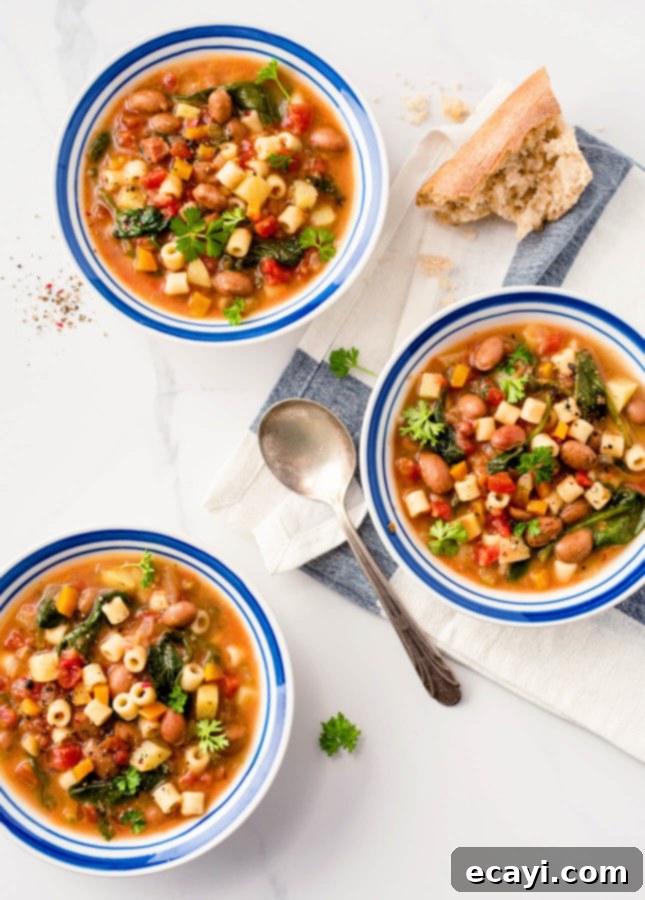
Pin Recipe
Winter Minestrone
Ingredients
- 2 tbsp extra-virgin olive oil
- 2.5 oz diced pancetta (½ cup)
- 1 small onion, minced
- 1 celery rib, diced
- 1 large carrot, diced
- 2 cloves garlic, minced
- 2 bay leaves
- 4 cups beef stock
- 2 cups water
- 28 oz diced tomatoes (1 large can)
- 19 oz Roman (borlotti) beans, red kidney beans, or cannellini beans, rinsed and drained
- 1 medium-sized potato, cut into 1/2-in (1 cm) dice (about 1 cup/250 ml)
- 1 piece of Parmigiano-Reggiano rind (see note)
- 1 tsp kosher salt, or fine sea salt
- 1/2 tsp each: dried oregano and dried thyme
- Freshly ground black pepper
- 2 cups finely chopped kale, Swiss chard, or spinach
- 2.5 oz short dry pasta, such as ditalini (about ½ cup)
To serve (optional)
- Top quality extra-virgin olive oil
- Grated Parmigiano-Reggiano
- Fresh Italian parsley
Instructions
-
In a large pot set over medium heat, heat the olive oil. Add the pancetta and fry until golden and crisp, about 5 minutes. Using a slotted spoon, transfer the pancetta to a plate. Add the onion, celery, and carrot to the pot and cook, stirring from time to time, until the vegetables are soft, about 10 minutes. Add the garlic and bay leaves and cook, stirring, for 1 minute more. Add the beef stock, water, diced tomatoes, beans, potato, Parmigiano-Reggiano rind, salt, oregano, thyme, and some black pepper. Stir to combine, then bring to a boil. Lower the heat and simmer for 20 minutes. Stir in the greens and dry pasta and keep cooking for 15 minutes.
-
SERVING: Fish out the Parmigiano-Reggiano rind out of the soup. To make winter minestrone truly special, garnish each serving with a drizzle of olive oil, a dusting of Parmigiano-Reggiano, and a few leaves of Italian parsley. Serve with crusty bread.
-
STORAGE: Divide the winter minestrone between airtight containers and refrigerate for up to 4 days, or freeze for up to 1 month.
-
DAIRY-FREE OPTION: To make dairy-free minestrone, omit the parmesan from the recipe. Serve dairy-free winter minestrone sprinkled with nutritional yeast for a lovely boost in flavor.
-
GLUTEN-FREE OPTION: To make gluten-free minestrone, use gluten-free short dry pasta.
-
VEGAN OPTION: To make vegan winter minestrone, omit the pancetta and parmesan from the recipe, and make sure to use vegetable broth. Serve vegan winter minestrone sprinkled with nutritional yeast for a lovely boost in flavor.
Notes
Did you make this?
Tell me how you liked it! Leave a comment or take a picture and tag it with @foodnouveau on Instagram.
The Final Comfort: A Satisfying Bowl Awaits
In conclusion, this hearty winter minestrone isn’t just a recipe; it’s an invitation to experience warmth, comfort, and nourishment during the coldest months. Its rich, complex flavors develop beautifully, making it an ideal candidate for meal prepping and enjoying throughout the week. Whether you adhere strictly to the recipe or customize it with your favorite seasonal vegetables and dietary preferences, you’ll find that a bowl of this wholesome minestrone is truly a literal meal in itself. Serve it with crusty bread for dipping, a generous drizzle of good olive oil, and a sprinkle of fresh parsley and Parmesan cheese, and you’re all set for a truly delightful and soul-satisfying dining experience. Enjoy the warmth, savor the flavors, and let this incredible winter minestrone become a beloved staple in your kitchen!
This site is a participant in the Amazon Associates Program, an affiliate advertising program designed to provide a means for the site to earn fees by linking to Amazon and affiliated sites.
If you click on an affiliate link, I may earn advertising or referral fees if you make a purchase through such links, at no extra cost to you. This helps me creating new content for the blog–so thank you! Learn more about advertising on this site by reading my Disclosure Policy.
